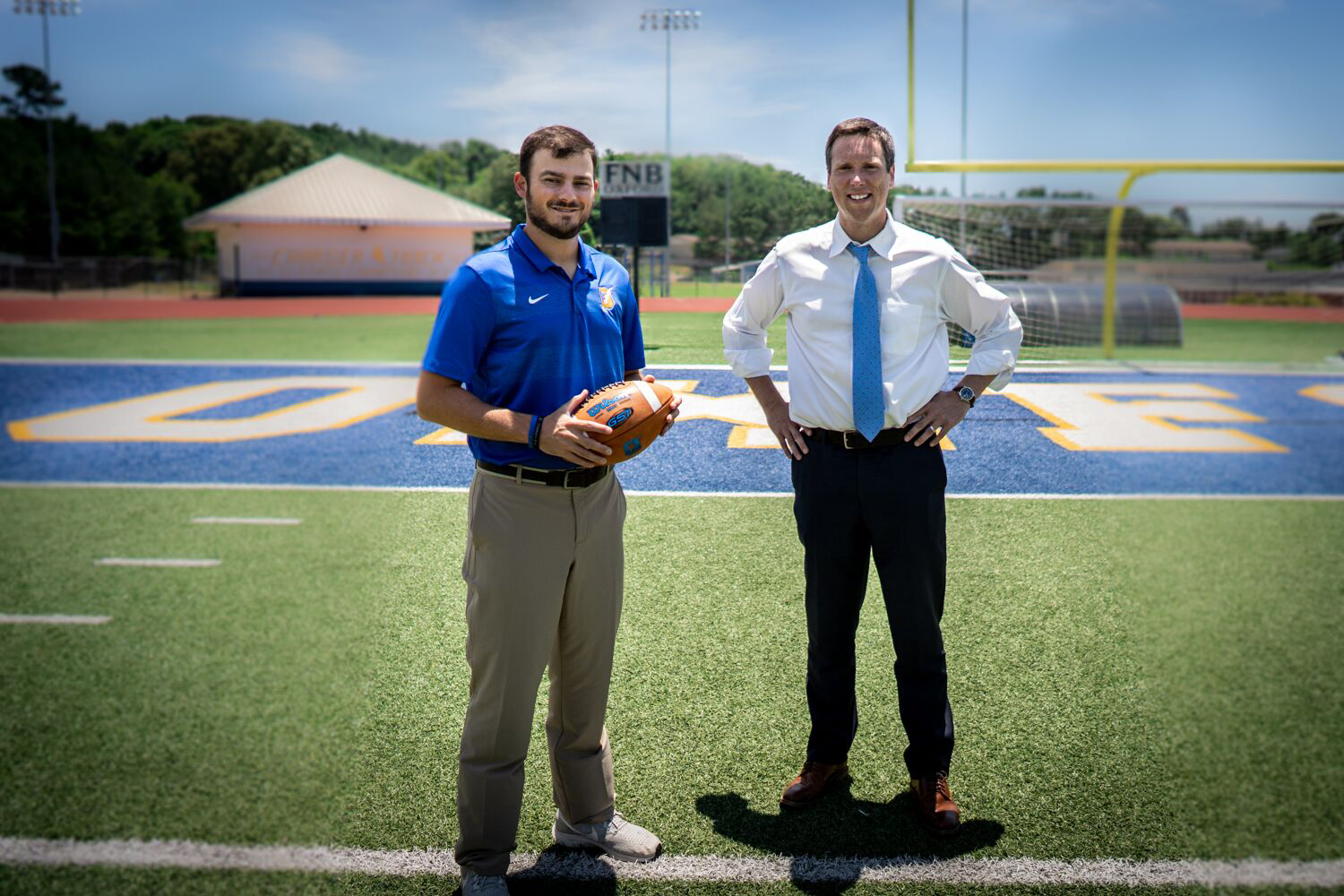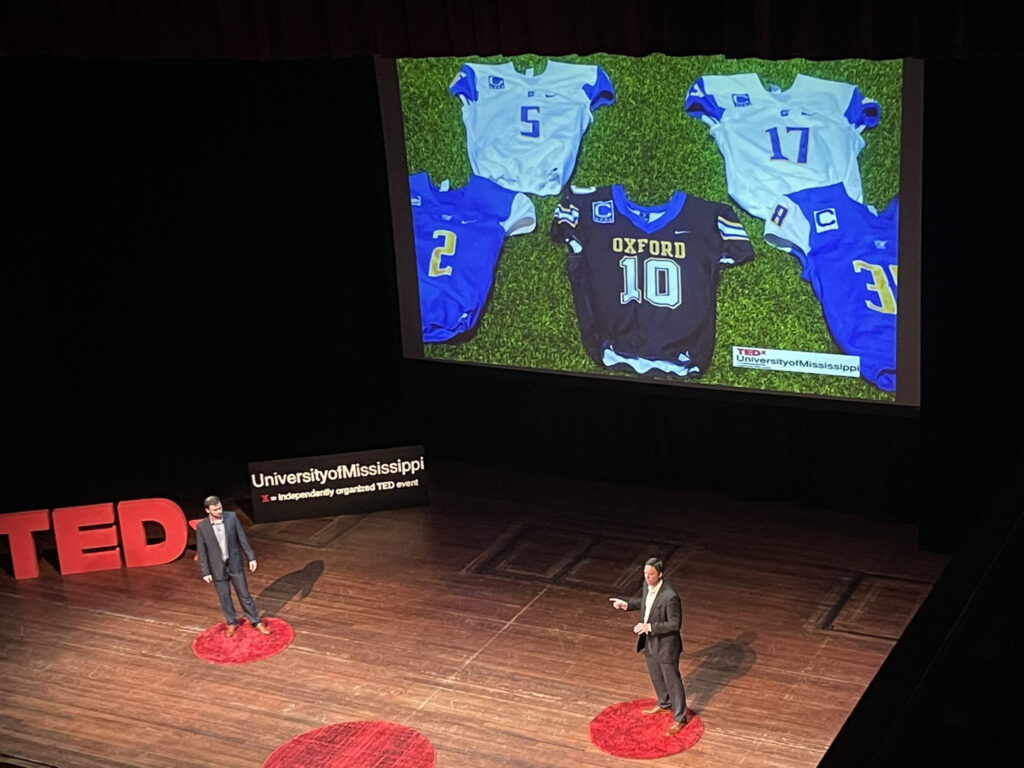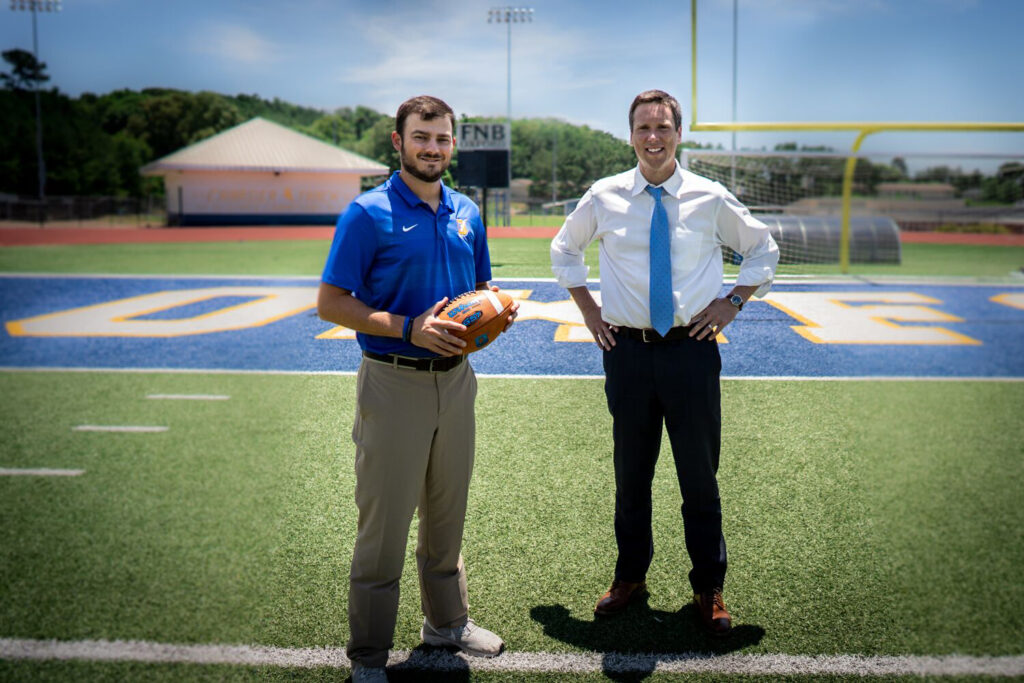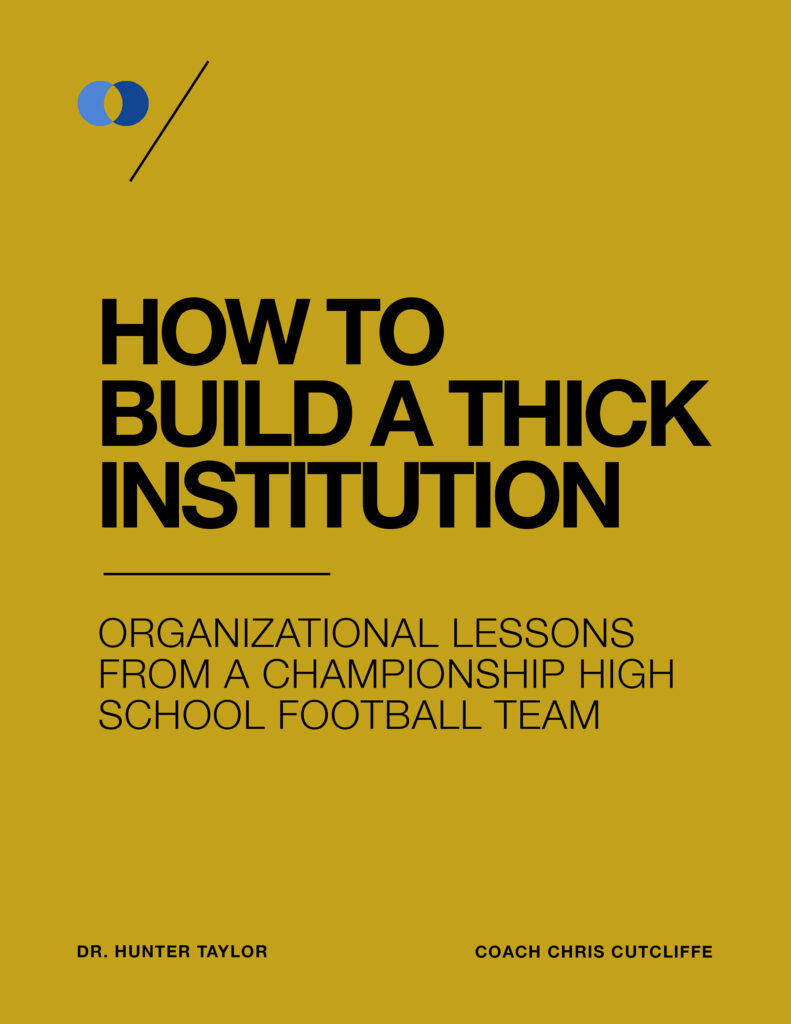
Chris Cutcliffe (left), head football coach at Oxford High School, and Hunter Taylor, a clinical assistant professor of teacher education at the University of Mississippi, have published a new book, 'How to Build a Thick Institution.' It chronicles the championship culture of the Oxford High School 2019 state championship football team and how to apply its lessons to all kinds of organizations. Submitted photo
As Oxford High School football coach Chris Cutcliffe puts it, it all started with one leader asking another leader for a “set of fresh eyes” on his program. From there, a new book was born.
How to Build a Thick Institution (BookBaby), by Hunter Taylor, University of Mississippi clinical assistant professor in the School of Education, and Cutcliffe, was released earlier this month. The story in it started when Taylor, who had just joined the UM faculty, approached the young, up-and-coming coach.
The new professor, who also was a high school basketball coach before coming to Ole Miss, thought he could help.
“I wrote my dissertation for my doctorate on six high school football programs in Texas, but I wasn’t measuring their on-the-field productivity,” Taylor said. “I was fascinated by how people put together a tight-knit locker room, why are certain small towns in the school districts’ identities tied with the successes of a program, or how a community often sees these coaches as people who are helping raise their kids.”
“I studied the question of, ‘Why is there such an affinity for a certain program and how is it created?'”
Cutcliffe, who was then a new head coach, young and eager to succeed, welcomed the input, and he and Taylor began working together in 2017. They started the week of the Chargers‘ rivalry game with Lafayette County High School, its crosstown rival.
“(Cutcliffe) was super ambitious and wanting to put his stamp on things,” Taylor said. “He actually had me ride the bus with the team to the game.
“You see all aspects of the program, the staff and the locker room and how they transition between things and the different methods they have in place. There is a lot that goes into it.”
They worked to create a family culture, develop future leaders and maximize the program’s on-field potential. What resulted is a good lesson in the world of “improvement science,” which is a problem-solving approach focused on continuous inquiry and learning.
“I took a ton of notes,” Taylor said. “I had nothing to lose. I was honest and said there were some good things and some things that you could improve upon.
“Chris is very good at what he does. He loved it, and we just started meeting week-to-week and going through our observations.”
During one of their meetings, Taylor brought an article from The New York Times titled, “How to Leave a Mark on People.” The article, written by David Brooks, explained the difference between “thin” and “thick” institutions, with the latter describing certain organizations that propelled members to do even more good with their lives.
This became the direction for their work and is the inspiration for the title of their book.
By 2019, the Oxford High School Chargers had won their first-ever 6A state championship in football. During that run, Taylor could see the team come together before his eyes.
“There are certain values that become embedded in a program that the person in the program takes on,” Taylor said. “You see this sort of moral forming of them during the experience. We went off that aspect of it. It kept getting better and better, and players were having better experiences.”
“A lot goes into winning. Their talent, their scheme and their staff is incredible, but I do think our work was part of that success.”
The two also appeared at the 2021 TEDxUniversityofMississippi to talk about their findings. Their talk is available here.
Cutcliffe, who is also the son of former Ole Miss head football coach David Cutcliffe, said it was clear they were on to something pretty early in the project. The results of their efforts to build a closer, more resilient team have been clear, the coach said.
“We have seen a lot of on-the-field success, but in the sports world, when you are behind in a game, that’s when you can really see the work you have done in building a connected team,” he said. “You can tell by watching how the unit responds to being down.”
Taylor and Cutcliffe still work together. Taylor said he asks Cutcliffe for feedback on his own work as well, so the talks aren’t all football-related. The two believe their work has wider application as well.
“It’s a really cool project,” Cutcliffe said. “I think we realized we were doing some really good work that we thought could benefit other people, and that’s when we started heading in this direction.
“This is something is something that any group or organization can find very beneficial.”
By Michael Newsom






